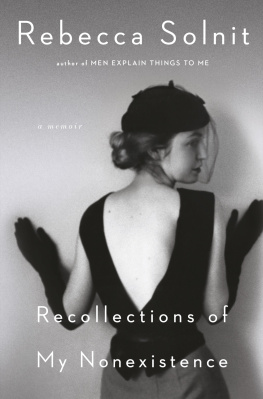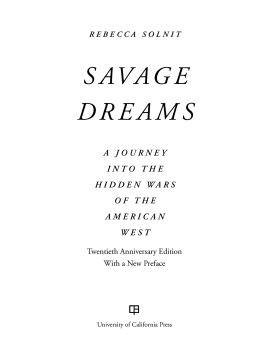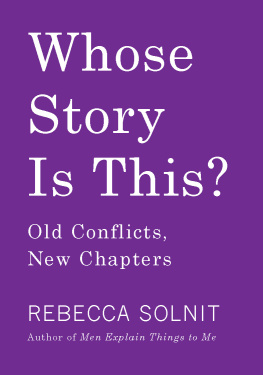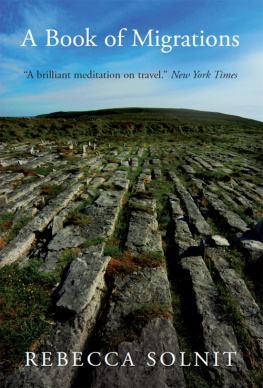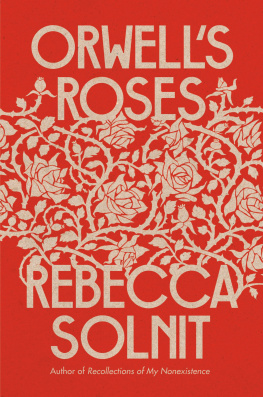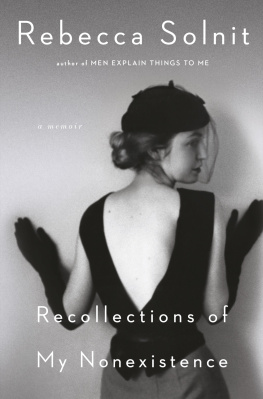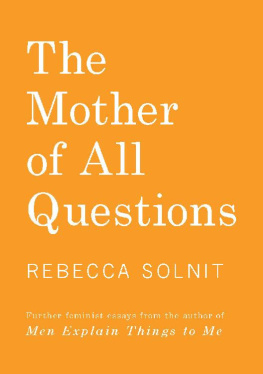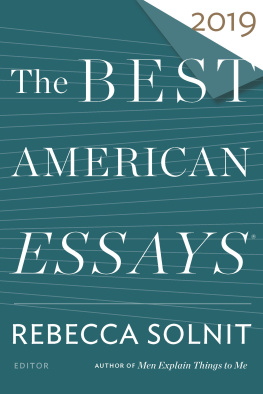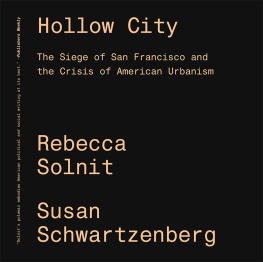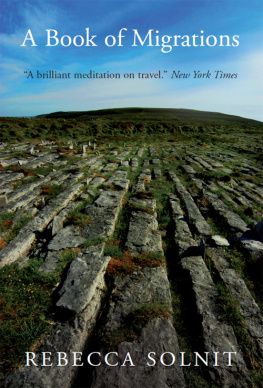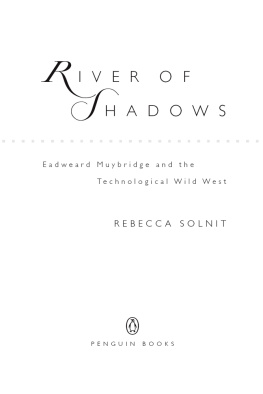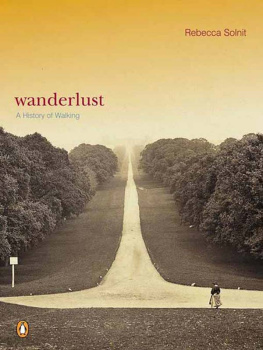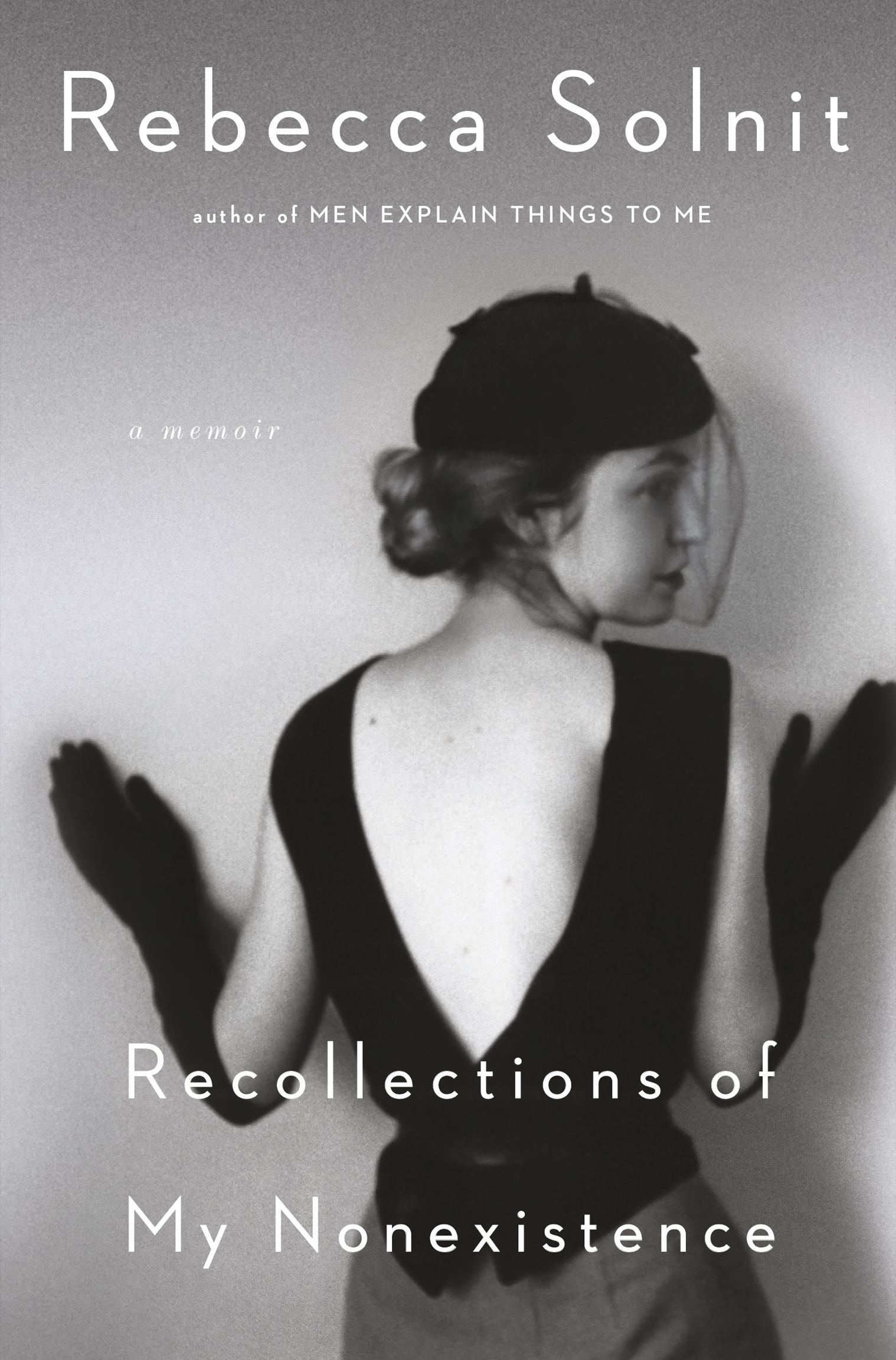
A LSO BY R EBECCA S OLNIT
Secret Exhibition: Six California Artists of the Cold War Era
Savage Dreams: A Journey into the Hidden Wars of the American West
A Book of Migrations: Some Passages in Ireland
Wanderlust: A History of Walking
Hollow City: The Siege of San Francisco and the Crisis of American Urbanism (with Susan Schwartzenberg)
As Eve Said to the Serpent: On Landscape, Gender, and Art
River of Shadows: Eadweard Muybridge and the Technological Wild West
Hope in the Dark: Untold Histories, Wild Possibilities
A Field Guide to Getting Lost
Yosemite in Time: Ice Ages, Tree Clocks, Ghost Rivers (with Mark Klett and Byron Wolfe)
Storming the Gates of Paradise: Landscapes for Politics
A Paradise Built in Hell: The Extraordinary Communities That Arise in Disaster
Infinite City: A San Francisco Atlas
The Faraway Nearby
Unfathomable City: A New Orleans Atlas (with Rebecca Snedeker)
The Encyclopedia of Trouble and Spaciousness
Men Explain Things to Me
Nonstop Metropolis: A New York City Atlas (with Joshua Jelly-Schapiro)
The Mother of All Questions
Drowned River:The Death and Rebirth of Glen Canyon on the Colorado (with Mark Klett and Byron Wolfe)
Call Them by Their True Names: American Crises (and Essays)
Cinderella Liberator
Whose Story Is This?Old Conflicts, New Chapters
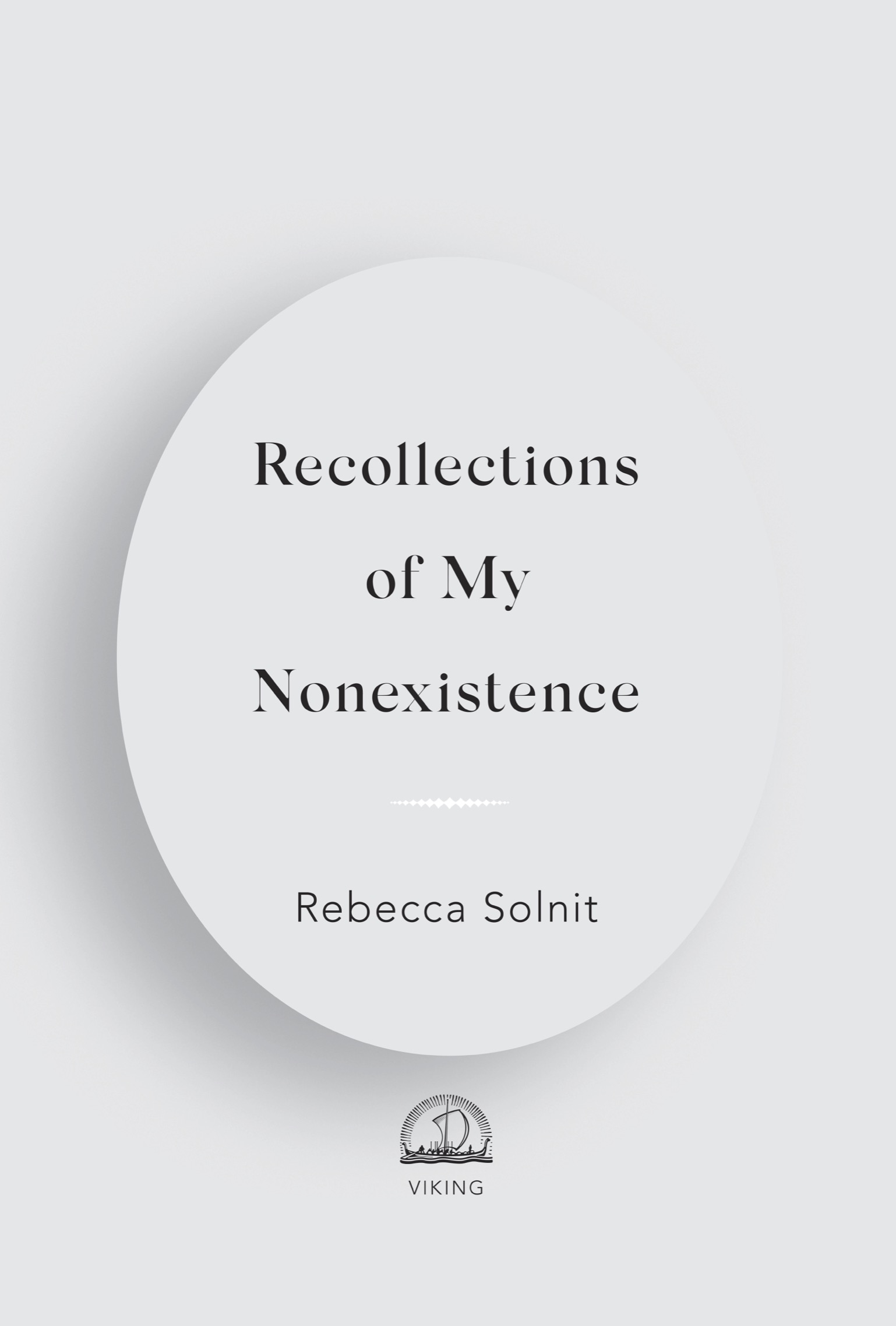

VIKING
An imprint of Penguin Random House LLC
penguinrandomhouse.com
Copyright 2020 by Rebecca Solnit
Penguin supports copyright. Copyright fuels creativity, encourages diverse voices, promotes free speech, and creates a vibrant culture. Thank you for buying an authorized edition of this book and for complying with copyright laws by not reproducing, scanning, or distributing any part of it in any form without permission. You are supporting writers and allowing Penguin to continue to publish books for every reader.
Frontispiece courtesy of the author
Grateful acknowledgment is made for permission to reprint the following:
Excerpt from Never Before, [The New Yorker, 1980] reprinted with permission of Frances Levine.
Rant by Diane di Prima, from Pieces of a Song. Copyright 1990 by Diane di Prima. Reprinted with the permission of City Lights Books, www.citylights.com.
LIBRARY OF CONGRESS CA TALOGING-IN-PUBLICAT ION DATA
Names: Solnit, Rebecca, author.
Title: Recollections of my nonexistence / Rebecca Solnit.
Identifiers: LCCN 2019022497 (print) | LCCN 2019022498 (ebook) | ISBN 9780593083338 (hardcover) | ISBN 9780593083352 (ebook)
Subjects: LCSH: Solnit, Rebecca. | Women authors, American20th centuryBiography.
Classification: LCC PS3569.O585 Z46 2020 (print) | LCC PS3569.O585 (ebook) | DDC 814/.54 [B]dc23
LC record available at https://lccn.loc.gov/2019022497
LC ebook record available at https://lccn.loc.gov/2019022498
Penguin is committed to publishing works of quality and integrity. In that spirit, we are proud to offer this book to our readers; however, the story, the experiences, and the words are the authors alone.
Cover design by Paul Buckley
Cover photograph by Shaun ORourke
pid_prh_5.5.0_c0_r0
Contents
1
One day long ago, I looked at myself as I faced a full-length mirror and saw my image darken and soften and then seem to retreat, as though I was vanishing from the world rather than that my mind was shutting it out. I steadied myself on the door frame just across the hall from the mirror, and then my legs crumpled under me. My own image drifted away from me into darkness, as though I was only a ghost fading even from my own sight.
I blacked out occasionally and had dizzy spells often in those days, but this time was memorable because it appeared as though it wasnt that the world was vanishing from my consciousness but that I was vanishing from the world. I was the person who was vanishing and the disembodied person watching her from a distance, both and neither. In those days, I was trying to disappear and to appear, trying to be safe and to be someone, and those agendas were often at odds with each other. And I was watching myself to see if I could read in the mirror what I could be and whether I was good enough and whether all the things Id been told about myself were true.
To be a young woman is to face your own annihilation in innumerable ways or to flee it or the knowledge of it, or all these things at once. The death of a beautiful woman is, unquestionably, the most poetical topic in the world, said Edgar Allan Poe, who must not have imagined it from the perspective of women who prefer to live. I was trying not to be the subject of someone elses poetry and not to get killed; I was trying to find a poetics of my own, with no maps, no guides, not much to go on. They might have been out there, but I hadnt located them yet.
The struggle to find a poetry in which your survival rather than your defeat is celebrated, perhaps to find your own voice to insist upon that, or to at least find a way to survive amidst an ethos that relishes your erasures and failures is work that many and perhaps most young women have to do. In those early years, I did not do it particularly well or clearly, but I did it ferociously.
I was often unaware of what and why I was resisting, and so my defiance was murky, incoherent, erratic. Those years of not succumbing, or of succumbing like someone sinking into a morass and then flailing to escape, again and again, come back to me now as I see young women around me fighting the same battles. The fight wasnt just to survive bodily, though that could be intense enough, but to survive as a person possessed of rights, including the right to participation and dignity and a voice. More than survive, then: to live.
The director, writer, and actor Brit Marling said recently, Part of what keeps you sitting in that chair in that room enduring harassment or abuse from a man in power is that, as a woman, you have rarely seen another end for yourself. In the novels youve read, in the films youve seen, in the stories youve been told since birth, the women so frequently meet disastrous ends.
The mirror in which I saw myself disappear was in the apartment I inhabited for a quarter century, beginning in the last months of my teens. The first several years there were the era of my fiercest battles, some of which I won, some of which left scars I still carry, many of which so formed me that I cannot say I wish that it had all been otherwise, for then I would have been someone else entirely, and she does not exist. I do. But I can wish that the young women who come after me might skip some of the old obstacles, and some of my writing has been toward that end, at least by naming those obstacles.
2
Another mirror story: When I was about eleven there was a shoe store where my mother got me the engineer boots I favored back when I was trying not to be that despised thing, a girl, and was trying to be what seemed like a separate thing, rugged, ready for action, but something else made the store memorable. If you stepped in front of the mirrors that lined both sides of the center aisle, you could see an image of an image of an image of an image of yourself or the shoe stools or anything, each one more watery and dim and remote, stretching onward, beyond, seemingly forever, as though an ocean lay in there with the reflections and you were seeing farther and farther into the sea-green depths. It wasnt the self I was trying to catch sight of then, but the beyond.

